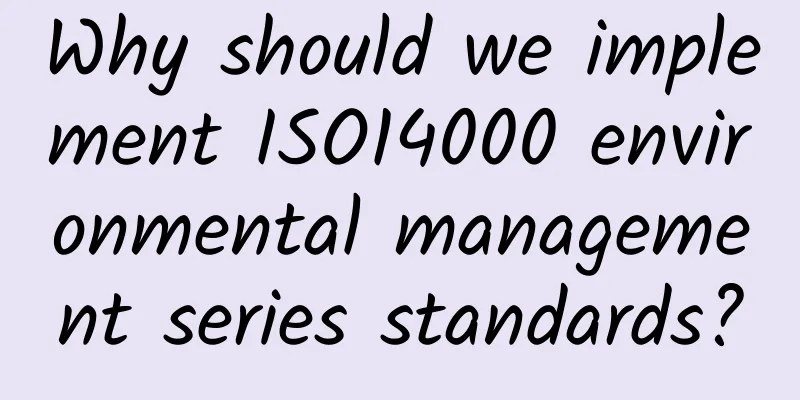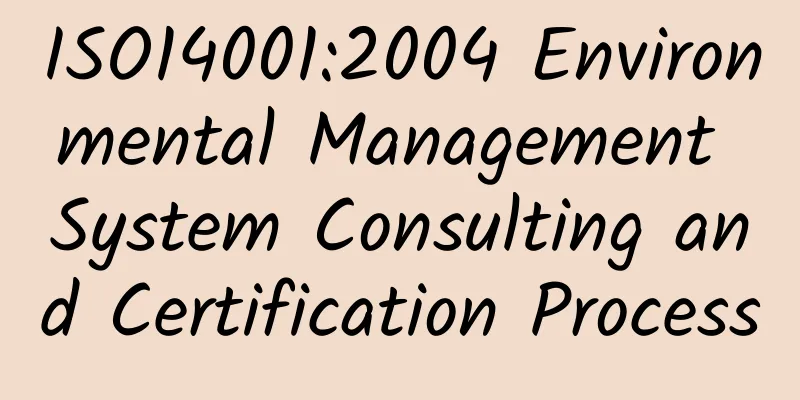Why should we implement ISO14000 environmental management series standards?

|
The ISO14000 environmental management series of standards is a set of international standards issued by the International Organization for Standardization (ISO) following the ISO9000 quality management series of standards. In 1993, the International Organization for Standardization (ISO) formally established the Environmental Management Technical Committee with the serial number ISO/TC207, and officially started the work of formulating international universal standards for environmental management. ISO has allocated 100 standard numbers from 14001 to 14100 to TC207, collectively referred to as the ISO14000 series of standards, of which the ISO14001 standard is the core of the entire ISO14000 series of standards, and is also the only standard in this series of standards that can be used as the basis for third-party audit and certification of environmental management systems. Other standards are its supplements, interpretations and applications. After the launch of the ISO14000 environmental management series of standards, the President of the International Organization for Standardization, Mohrmann, made the following evaluation of the environmental management standards. He believed that the standards can enhance environmental awareness, improve environmental behavior and performance; establish an effective mechanism for environmental management and promote continuous improvement, reduce environmental liability losses, and rationally utilize resources; and standardize environmental protection for the benefit of the next generation. The purpose of standard implementation is to help organizations achieve the unity of environmental goals and economic goals, and to support environmental protection and pollution prevention. This is the fundamental starting point for the International Organization for Standardization to draft and implement this series of standards, and it should also be the ultimate goal for enterprises to implement standards and establish systems. Standards are not only to emphasize what requirements enterprises should meet, but more importantly to establish a management system for continuous improvement for enterprises. The implementation of standards also helps to eliminate non-tariff barriers set up by countries on environmental issues in international trade. This trade barrier has become a focus of world attention in recent years and is becoming the largest non-tariff barrier, hindering the export of products from developing countries to developed countries. The introduction of this international standard will change the situation of each doing its own thing in this field, form an environmental management standard based on the laws and regulations of various countries, provide a large space for developing countries in the establishment and certification of systems, and also set higher goals for the environmental behavior of enterprises in developing countries, creating an opportunity to keep up with the development of international environmental management. |
<<: The promotion effect of ISO14001 environmental management system certification
>>: Briefly introduce the steps to establish ISO14000 environmental management system
Recommend
How is Neptune Supply Chain? What services does Neptune Supply Chain provide?
How about Neptune Supply Chain? Neptune Supply Ch...
What is ISCC International Sustainability and Carbon Certification?
The term "sustainable development" appe...
Characteristics of implementing ISO9000 quality assurance system
The main features of the implementation of ISO900...
What are some useful tips for Google SEO optimization?
When doing Google SEO, you usually first investig...
What does a company that has passed ISO9000 need to do to upgrade to TS16949?
What does a company that has passed ISO9000 need ...
How about Meiji Logistics? What industries does Meiji Logistics service cover?
How about Meiji Logistics? A-Logistics is a globa...
TESCO factory inspection questions and answers
Q: What is the TESCO factory inspection process? ...
What is Dealmoon? What is the development history of Dealmoon?
What is Dealmoon ? Dealmoon is the largest biling...
SNS Marketing——Social Network Services
SNS, the full name of which is Social Networking ...
What does Macy's factory inspection include?
What does Macy's factory inspection include ?...
Timberland_Timberland factory inspection quality audit procedures
Timberland_Timberland factory inspection quality ...
ICTI Training Manual (I)
Brief description Training content ü Explain some...
What is MercadoLibre like? What sites are there on the MercadoLibre platform? How does MercadoLibre collect payments?
What about MercadoLibre? Founded in 1999, Mercado...
What are the characteristics of eBay website?
eBay (EBAY, Chinese for Electronic Bay, eBay, Yib...
Fast fashion brands' social responsibility: demand for organic cotton and recycled materials will increase significantly
Recently, the news that "Zara's parent c...









